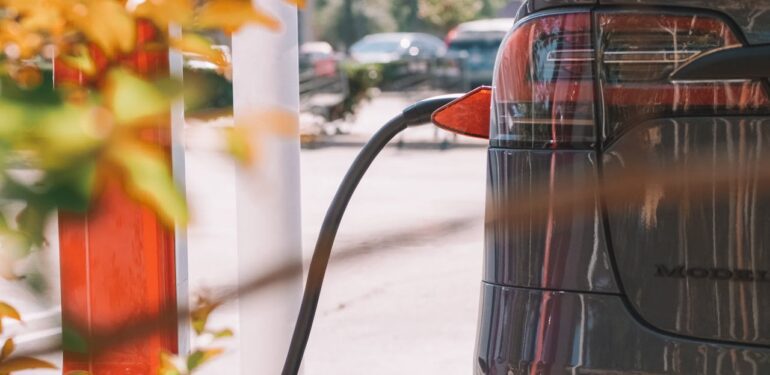As electric vehicles (EVs) surge in popularity, mastering the art of efficient charging becomes paramount for owners. Without the right knowledge, you could end up damaging your battery and paying exorbitant prices.
Whether you’re a new EV owner navigating the intricacies of charging for the first time or a seasoned electric driver, this article is tailored to demystify the process, ensuring your battery is powered optimally and sustainably. Welcome to a world where every charge leads to a smoother journey.
How Electric Car Charging Works
At its core, charging an electric vehicle involves replenishing the battery’s stored electrical energy. When you plug in your EV, electricity flows from the grid through your charging cable and into your car’s onboard charger, converting the alternating current (AC) into the direct current (DC) needed to charge the battery.
Let’s look into the three levels of electric car charging:
- Level 1: This is the most basic form of charging, using a standard household outlet (110-120V). It’s the slowest method, generally adding about 2 to 5 miles of range per hour of charging.
- Level 2: A step up from Level 1, Level 2 charging uses a higher voltage (240V) and is the most common type of EV charging. It typically adds about 10 to 60 miles of range per hour, making it ideal for daily use.
- DC Fast Charging (DCFC): The quickest charging option, DC Fast Charging can add 60 to 100 miles of range in as little as 20 minutes, making it perfect for long-distance travel.
Charging at Home vs. Public Charging
Most EV owners find that charging at home meets the majority of their needs, offering convenience and lower costs. Public stations, on the other hand, are essential for topping up on the go, especially during longer trips. Understanding the availability and types of public charging networks can significantly enhance your travels. There are many ways that you can optimize your experience at either option, which we’ll look into in the upcoming sections of this article.
Optimising Home Charging
For many electric vehicle owners, your home is where the majority of car charging occurs. Creating an efficient home setup not only enhances convenience but can also lead to significant savings and optimal battery health. Here are key strategies to help you maximize how you charge your first electric car.
Installation Best Practices
- Strategic Placement: Install your charging station in a location that provides easy access to your EV and minimizes the need for long cable runs. Consider factors like proximity to your home’s electrical panel and how your vehicle is typically parked.
- Professional Installation: To ensure safety and compliance with local codes, have your charging station installed by a qualified electrician. They can also advise on any necessary upgrades to your home’s electrical system.
Charging Schedules and Off-Peak Charging
- Off-Peak Charging: Many utility companies offer lower rates during off-peak hours, usually late at night to early morning. Schedule your EV to charge during these times to reduce your electricity costs.
- Smart Chargers: Utilise a smart charging station’s scheduling feature to automatically start and stop charging during off-peak hours. This not only saves money but also helps balance the electrical grid’s load.

Maximising Public Charging
While home charging covers the daily needs of most electric vehicle owners, public stations play a crucial role in extending your EV’s range, especially during long trips. Understanding how to effectively use this infrastructure can greatly enhance your driving experience and ensure you’re never left stranded.
Locating Public Charging Stations
- Use of Apps and Websites: Leverage the car charger app like OVO Charge powered by Bonnet to find nearby charging stations, check their availability in real-time, and even reserve a spot in advance.
- Planning for Long Trips: Before embarking on a long journey, plan your route around charging station locations. Consider the types of chargers along the way (Level 2 or DC Fast Charging) and their network affiliations to ensure compatibility with your EV.
Public Charging Etiquette
- Charging Only When Necessary: To ensure availability for other drivers, use public charging stations only when needed rather than as a parking spot.
- Sharing the Charge: If using a station with multiple plugs, be mindful of other EVs that may need to charge. Some stations offer the ability to share power between two vehicles, reducing the charge rate but accommodating more users.
Cost-Effective Charging Strategies
- Understanding Pricing Structures: Public charging costs can vary widely based on the network, location, and time of use. Familiarise yourself with the pricing policies of different networks to avoid unexpected charges.
- Subscription Plans: Some charging networks offer membership plans or subscriptions that provide lower rates or other benefits. If you frequently use a particular network, consider signing up for these programs to save on charging costs.
Tips for Maintaining Battery Health
The longevity and performance of an electric vehicle are significantly influenced by the health of its battery. Understanding how to properly care for your EV’s cell can extend its life and maintain its efficiency, ensuring your car remains dependable and cost-effective over the years.
Optimal Charging Practices
Avoiding extremes in battery charge levels is crucial; consistently charging the cell to full capacity or allowing it to completely deplete can lead to accelerated degradation. For daily usage, it’s best to maintain the battery’s charge within the 20% to 80% range, reserving full charges for occasions that necessitate extended range, such as long trips. Additionally, temperature management plays a significant role in preserving cell health.
Batteries are sensitive to extreme temperatures, and exposure to severe heat or cold can be detrimental. It’s recommended to park and charge your EV in environments where the temperature can be controlled whenever possible. In cases of extreme cold, preconditioning your vehicle while it remains plugged in can help to gently warm the battery before you commence driving, further protecting it from the harsh effects of cold weather.
Adopting smart charging practices is key to maximizing your electric vehicle’s efficiency and longevity. By understanding the basics, choosing the right equipment, and maintaining battery health, you can ensure a seamless EV experience. Stay informed and adapt to new advancements to keep your car running optimally.


